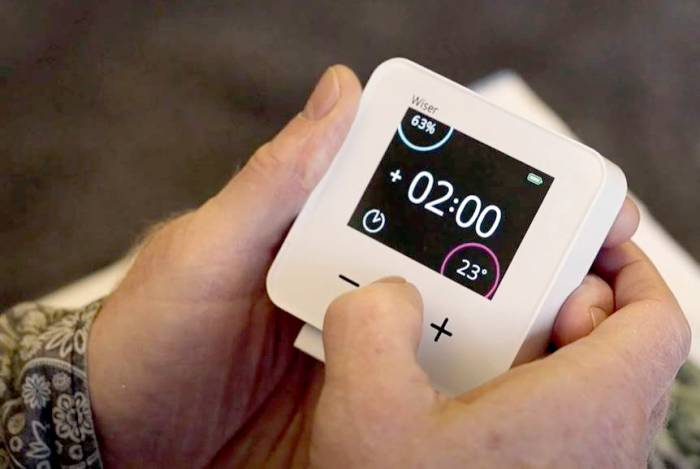Smart heating products are revolutionising the way we heat our homes. They offer a blend of convenience, efficiency, and cost savings so it’s no shock how popular they have become in recent years. However, with so many products on the market, it’s hard to know what features to look for in smart heating products. Do you want integration with smart devices such as Alexa? Or are you looking for a smart heating system that allows you to create different zones?
Understanding some of the best features will help you make an informed decision, so you'll be able to choose a product that suits your needs and enhances your home's comfort. So, whether you're a tech enthusiast or looking to upgrade your heating system comfort, in this blog, we’ll delve deeper into the top 5 features to look for in smart heating products.
1. Remote Access (Control your Heating from your Phone)
Remote access is a standout feature of smart heating products. It enables users to control their home’s heating system from anywhere in the world (if they have an internet connection). With remote access, adjusting your heating from out and about is simple. Whether you're at work or on holiday, your home smart heating system is in your hands.
Heating control via your phone is particularly beneficial if plans change unexpectedly. For example, if you’re delayed getting home you can make changes from your phone to ensure the heating isn’t on while the house is empty, saving you money. The flexibility this feature allows is worth its weight in gold when it comes to running your heating system as efficiently as possible.
2. Energy Efficiency and Cost Savings
Energy efficiency is a crucial feature of smart heating products. These smart heating devices not only provide a huge amount of flexibility, they also cut energy usage and reduce your bills. Smart heating features ensure that heat is delivered only where and when it’s needed, rather than heating an empty home.
Within the overall smart heating system, smart thermostats are devices that play a significant role in energy savings. They allow precise control over your home's temperature and when used in conjunction with a smart radiator thermostat, you can even manage the temperature in individual rooms with custom schedules.
Another key benefit is real-time energy monitoring. You can view your energy consumption patterns through easy-to-use apps, which can help to identify more ways to save. Consider smart heating products with automatic adjustments based on your habits. For example, adaptive systems will learn your schedule and optimise your heating to minimise waste. Some products also offer weather-responsive features that can adjust heating based on outside temperatures. This helps to maintain comfort while conserving energy.
3. Scalability and Compatibility
A good smart heating system should grow with your needs, providing flexibility and future-proofing your investment. There are disadvantages with upgrading to a system with a very limited paired device allowance, so look for one that is buildable beyond a level you’re hoping for, especially if you’re thinking of up-sizing in the future or even adding underfloor heating as part of an extension or DIY project.
Another feature to consider is whether a smart heating ayatem allows for integration with other products and platforms. For example, if you want to make the most of smart plugs, smart lights or similar products, then the system you choose needs to allow for that. Being energy-efficient doesn’t always focus on the heating system, homeowners can be efficient with their electrical use too.
As technology evolves, your smart system must be capable of coping with upgrades. Ensure you have a system that has automatic updates applied to it regularly so it continues to improve and function with the manufacturer’s latest features.
Compatibility is a key feature to consider when implementing a smart heating system. The main compatibility you’ll need to check will be with your boiler, so it’s important to know what type of boiler you have, such as a combi boiler, conventional boiler or perhaps you a heat pump. Most smart heating products are compatible with most UK heating systems, but there will be some exceptions for less common heating system types so it’s something to double-check before you proceed.
If you’re opting for multi-room control, compatibility with existing thermostatic radiator valves should also be checked. Again, most smart radiator thermostats have adapters included for common exceptions but there are a minority of valve bodies that may not be compatible.
4. User-Friendly Interface and Programmability
A smart heating product must have an easy-to-use interface. Technology changes fast and not all homeowners are confident with new innovations, so for these users, simplicity is a must. Many smart thermostats offer a choice of intuitive touchscreens or app controls, as well as more traditional manual controls to suit any user.
Many smart heating devices provide clear navigation so users can quickly access settings, schedules, and energy reports. This accessibility makes temperature management much easier. As well as that, being able to pre-schedule heating reduces the need for manual adjustments. This feature offers both convenience and energy efficiency whilst helping maintain comfort without constant monitoring. As mentioned earlier, control also extends to mobile applications with most apps offering a seamless, user-friendly experience.
5. Advanced Features for Enhanced Comfort and Savings
Modern smart heating products offer advanced features that enhance comfort and savings. These advanced features transform how we experience home heating. One example is geofencing, which when enabled via IFTTT, uses your phone's location to adjust the heating as you arrive or leave the home. This ensures optimal comfort and energy efficiency without the need for manual input every time you return home or leave.
Learning capabilities allow smart devices to adapt over time. The more they learn, the more they will be able to accurately recognise your schedule and preferences. This adaptability helps maintain ideal temperatures with less manual input.
Other advanced features include weather compensation. This feature adapts the heating settings based on weather forecasts. For example, if a storm or cold snap is coming, your system prepares accordingly. This feature keeps your home comfortable despite weather changes that affect the indoor climate.
Why Choose Drayton Wiser for Your Smart Heating Needs?
Wiser’s smart heating solutions combine innovative technology with user-friendly features to deliver exceptional performance. Whether you’re looking to reduce your energy bills, enhance your home’s comfort, or take control of your heating from anywhere, Wiser has a smart heating product to suit your needs.
With features like multi-room heating, app integration, and voice control, Wiser makes smart heating accessible and efficient for every household. Plus, their scalable systems ensure you can upgrade and expand as your requirements change.
For more information on our smart heating products, contact us today or view our products online.







